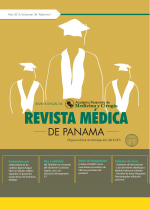Evaluación de la implementación de la estrategia “Treat to Target” en pacientes con artritis reumatoide en 8 centros de reumatología en Colombia después de un programa integral de difusión entre médicos
Autores/as
DOI:
https://doi.org/10.37980/im.journal.rmdp.2014163Resumen
Objetivo: Establecer el grado de adherencia a la estrategia T2T, antes y después de la implementación de un programa integral de difusión (PID), entre un grupo de reumatólogos en los principales centros de referencia colombianos.
Metodología: Se llevó a cabo un estudio analítico de antes y después.
La evaluación de adherencia incluyó: verificación del conteo articular, aplicación del DAS 28, tratamiento y seguimiento basado en los resultados del DAS 28. Se llevó a cabo una medición basal, se realizó el PID de la estrategia T2T en todos los centros y se practicó una medición de seguimiento al mes 12.
Resultados: Se evaluaron 681 casos en la medición basal, 676 a los 12 meses. La medición del conteo articular disminuyó del 84% al 81% (valor p:0,064); la medición del DAS 28 pasó del 24,5% al 31% (p:0,0001); la conducta terapéutica adecuada pasó del 24% al 31% (p:0,006); el seguimiento basado en DAS 28 pasó del 19% al 26% (p:0,002) y el nivel de adherencia basal que fue del 19% pasó al 26% en el mes 12 (p:0,002).
Conclusión: El nivel de adherencia basal al T2T entre los centros de estudio fue muy bajo. La estrategia de difusión integral, permitió mejorar los resultados de adherencia al T2T en una evaluación a 12 meses, sin embargo los resultados no son satisfactorios. Se deben proponer e implementar nuevas acciones encaminadas a mejorar la adherencia al T2T.
Evaluation of the implementation of the strategy "Treatments by objectives" in patients with rheumatoid arthritis in 8 rheumatology centers in Colombia after a comprehensive program of outreach to doctors.
ABSTRACT
Objective: To establish the degree of adherence to the “Treat to target” strategy of rheumatologists in referral centers in Colombia, before and after of implementation a comprehensive dissemination program (PID). Methods: An analytical study was performed. Assessment of adherence included: joint count verification, application of 28 DAS, treatment and monitoring based on the results of the DAS 28. Baseline measurement was performed, the PID of the T2T strategy was applied in all centers and a follow up at month 12 was performed. Results: 681 cases were evaluated at baseline, 676 cases 12 months after. Measuring joint count decreased from 84% to 81% (p-value: 0.064); using of DAS28 increased from 24.5% to 31%(p = 0.0001); defined adequate treatment increased from 24% to 31% (p = 0.006); defined adequate monitoring increased from 19% to 26% (p = 0.002) and the level of physician’s adherence increased from a basal 19% to 26% at month 12 (p = 0.002). Conclusions: The level of baseline adherence to T2T between study centers is very low. Comprehensive dissemination strategy used led to improve adherence to T2T at month 12.
Key words: Rheumatoid arthritis; therapy, prescription compliment, treatment result.
Publicado
Número
Sección
Licencia
Derechos autoriales y de reproducibilidad. La Revista Médica de Panama es un ente académico, sin fines de lucro, que forma parte de la Academia Panameña de Medicina y Cirugía. Sus publicaciones son de tipo acceso gratuito de su contenido para uso individual y académico, sin restricción. Los derechos autoriales de cada artículo son retenidos por sus autores. Al Publicar en la Revista, el autor otorga Licencia permanente, exclusiva, e irrevocable a la Sociedad para la edición del manuscrito, y otorga a la empresa editorial, Infomedic International Licencia de uso de distribución, indexación y comercial exclusiva, permanente e irrevocable de su contenido y para la generación de productos y servicios derivados del mismo. En caso que el autor obtenga la licencia CC BY, el artículo y sus derivados son de libre acceso y distribución.






